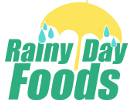Going on a liquid diet when you’re in the middle of a gastrointestinal disease (GI) flare-up is a great way to prevent dehydration and heal your body. Meanwhile, snacking on freeze dried foods, such as pineapple, diced chicken, and cauliflower will boost your nutrient levels as you recover. Between 60 and 70 million Americans live with GI diseases and when symptoms arise a liquid diet is the best course of action. So, let’s find out what liquids you should and shouldn’t consume and how to work nutrient-rich freeze dried foods back into your diet.
GI diseases and liquid diets
There are lots of different GI diseases that you may be affected by, including Crohn’s disease, inflammatory bowel disease (IBD), celiac disease, and gastroesophageal reflux disease (GERD). Not all GI diseases respond well to a liquid diet, but some of the ones that do are:
-
Crohn’s disease
-
Diverticulitis
-
-
-
-
Gastroenteritis
-
IBD
-
Gastroparesis
-
-
-
-
A liquid diet is recommended for these GI diseases and others because it gives the digestive system time to rest and recover. This is because liquid puts less strain on your stomach and intestines than solid food does.
Stick with clear liquids
When your GI disease symptoms arise, you must start a clear liquid diet. This type of diet is often medically prescribed as it’s an effective way of getting over GI symptoms while feeding your body essential nutrients. Although clear liquids make it sound like you can only drink water, there are actually lots of liquids you can choose from, including:
-
Juice
-
Broth
-
Tea (without milk)
-
Coffee (without milk)
-
Soft drinks
-
Ice pops
-
Sports drinks
-
Soup
-
Jello-O
Staying healthy on a liquid diet
As a general rule, when following a liquid diet due to GI disease, you should stay on it for as short a time as possible. Stanford Health Care advises that 5 days should be the maximum length of time. Any longer than this and you risk nutritional deficiencies, electrolyte imbalance, and nutrient absorption issues. Staying on a liquid diet indefinitely comes with further risks and may cause muscle loss, metabolic changes, and impact your dental health. One common dental health issue linked to liquid-only diets is tooth sensitivity. Tooth sensitivity can be caused by several things, including over brushing and tooth decay. But consuming a lot of acidic drinks is another cause. Soft drinks and orange juice, for example, which are allowed on a liquid diet, break down tooth enamel and leave white spots on teeth. This then causes tooth sensitivity that will need to be treated with salt water rinses, enamel boosters, and desensitizing toothpaste.
Reintroducing solid food
Once your GI disease symptoms settle down and you come off your liquid diet, you should initially introduce bland solid food back into your diet. This should include some of the following foods:
-
White bread
-
Potatoes
-
Dairy products
-
Lean meat
-
Lean fish
-
Eggs
-
Tofu
-
Crackers
-
White pasta
-
White rice
These foods are recommended because they’re easy to digest and are low in fat and fiber.
Replenishing missing nutrients
Liquid diets tend to be low in vitamin A, iron, vitamin B-12, and thiamine. So once you’ve successfully reintroduced solid bland food back into your diet, you need to focus on eating foods that contain these essential nutrients. The last thing you’ll want to do after being poorly is go shopping, so make sure your kitchen is well-stocked. This is where freeze-dried foods are your friend as they have a shelf life of around 25 years. Vitamin A is found in leafy green vegetables and orange and yellow fruit and veg, so opt for freeze dried broccoli and freeze dried mango. You’ll find plenty of iron in red meat, such as beef, so make sure you stock up on freeze dried diced beef and freeze dried ground beef. Bananas, strawberries, and cheese are all good sources of vitamin B-12 and can be purchased freeze-dried. Meanwhile, eating some freeze dried peas will help to top up your thiamine levels.
A liquid diet is a great way to combat the symptoms and effects of any GI disease that you’ve been diagnosed with. But remember, this should be a short-term diet only, and solid food, including freeze-dried foods, should be added back into your diet after just a few days.

